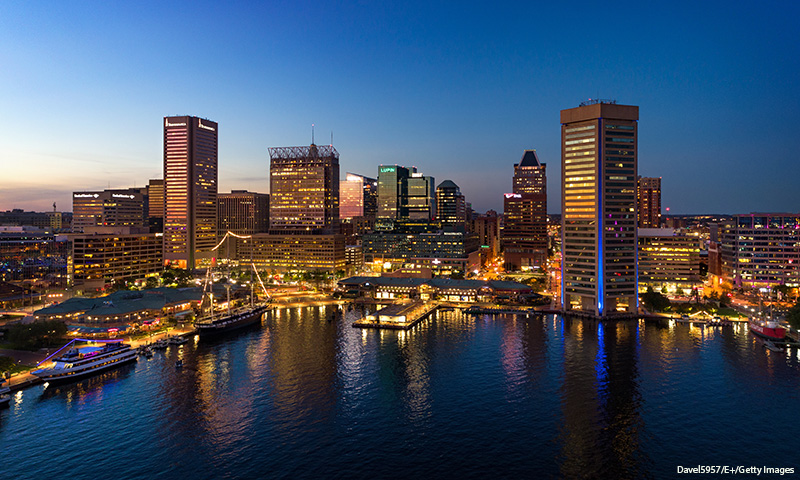
The Baltimore Beat is an African American-led alternative newspaper that focuses on the community of Baltimore, Maryland. After closing in 2020, the newspaper relaunched as a nonprofit in August 2022. The relaunch was made possible by a $1 million gift from the Lillian Holofcener Charitable Foundation. . The Holofcener family sees the bold move as a path towards greater racial equity.
Alternative Newspapers in Baltimore
According to a 2018 Pew Research Center analysis of census data, employees of major news companies in the United States are not as diverse as the whole working population. Within the United States, more than 75 percent of newsroom employees are white. As a result, communities that are often underrepresented in mainstream media have created alternative, or alt, newspapers. Alt newspapers report on news that is of interest to a specific group. Some examples include people with a shared political perspective, members of the LGBTQ+ community, military service members, and African American communities.

With a population that is more than 60 percent African American, Baltimore has a long history of alt newspapers focused on uplifting African American voices. One of the oldest African American newspapers in the country, the Baltimore Afro-American (AFRO), was established in Baltimore in 1892 by John H. Murphy, Sr., a former enslaved man. The Baltimore Beat was launched in November 2017 under a larger publishing company. It was led by journalists Lisa Snowden and Brandon Soderberg. After it was unable to fund the newspaper by selling advertising, the publishing company stopped supporting the Baltimore Beat in 2020.
The Holofcener Foundation
In 2020, Adam Holofcener approached Snowden and Soderberg about reviving the Baltimore Beat with a $1 million donation from his family’s foundation. According to Holofcener, the Lillian Holofcener Charitable Foundation had been giving out grants for decades without much direction. Although the gift to Baltimore Beat was the foundation’s last, the Holofcener family hopes that this kind of giving inspires other philanthropic groups to act in a similar manner. In fact, the Baltimore Beat has raised more than $250,000 since the Holofcener donation.
Holofcener and other members of his family view the donation as a form of repayment to Baltimore’s African American residents. Adam Holofcener’s grandfather accumulated the family’s wealth with his insurance business and then from successful athletic equipment stores.The Holofcener family, like many other white families, then left the city for the suburbs in the second half of the twentieth century. As other businesses also moved to suburban areas, Baltimore’s urban core was economically depressed and significantly impacted the African American population who lived there.
Donating the money back to the city’s African American community was only one part of making amends. Adam Holofcener also felt that it was important for the foundation to give up control of how the money was used. The Baltimore Beat staff were given all of the decision-making power in relaunching as a nonprofit. This, in Holofcener’s view, helped restore the imbalance in taking away his family’s money by empowering Baltimore’s African American community.
Relaunching the Baltimore Beat
With its relaunch as a nonprofit, the Baltimore Beat strives to carry on the tradition of African American journalism. Snowden, now editor-in-chief of the Baltimore Beat, seeks to achieve that mission both in the articles’ subject matter and by training young African American journalists in the newsroom. The Baltimore Beat is entirely run by African American editors and writers. They report on issues that celebrate, engage, inform, and empower the Baltimore community.
Equal access to the news is another main value of the Baltimore Beat. Funded by donations, the newspaper is always free to its readers. In addition to the online edition, print editions of each issue can be found at over 200 locations across the city. This helps make access to the news more equitable because over 40 percent of Baltimore residents do not have internet access at home.
Supporting the community is at the core of the Baltimore Beat. Each issue has a variety of articles that uplift and inform the community in different ways. The Community Resources section lists opportunities for health services, financial services, food delivery and distribution opportunities, and housing, utility, and rent assistance around the city. The publication shines light on artists within the community with poems, images, lists of arts and culture events, and reviews of movies, music, and art exhibitions. Investigative articles about current events explore issues that impact the community while providing important structural or historical background.
As of February 6, 2023, the Baltimore Beat has published 11 issues since its relaunch in August 2022. From internships and articles to distribution and donations, this relaunch allows the newspaper to center the community in everything it does.
